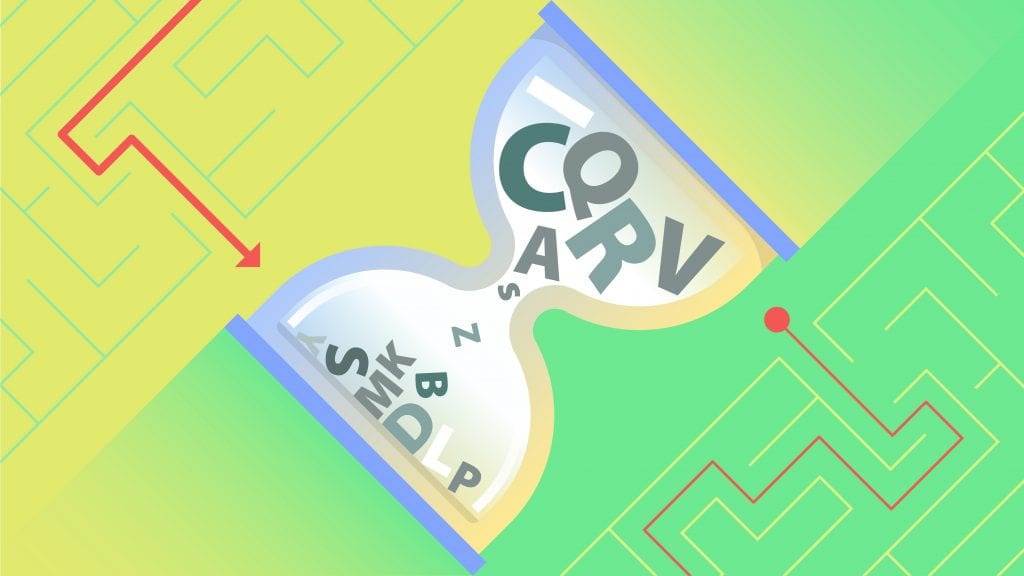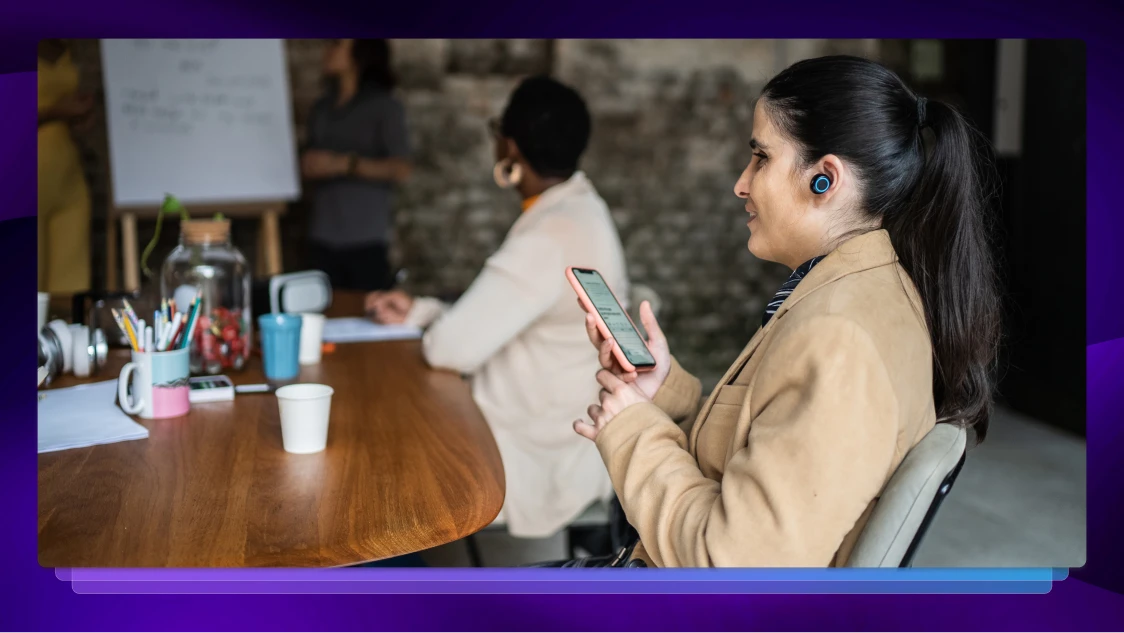Improved Learning: Teaching Methods & Strategies for Students With Dyslexia
Help students with dyslexia succeed. Discover teaching methods and accommodations—like multisensory lessons and assistive tech—that support dyslexic learners.

This article is the third in a three-part series on teaching strategies for students with disabilities. Find the other entries below:
Part 1: Teaching Methods & Strategies for Students with Autism
Part 2: Teaching Methods & Strategies for Students with Hearing Loss
“Having tried desperately to focus on a recorded A-level ancient history class, I slumped against my bedroom desk,” writes Ollie Wells, a student with dyslexia. “No subtitles or written alternative to the lesson were there to make absorbing the information possible. There was no one on hand to explain it, either.”
The closure of schools for lockdown has been tough on every student. But it has highlighted the difficulties that dyslexic students face, in ‘real life’ and beyond. Mainstream education is not designed for students with learning disorders. So how can teachers take care of this significant minority in their classroom?
What is Dyslexia?
Dyslexia is the most common language-based learning disorder. It is also one of the most misunderstood. Dyslexia is not an issue of vision or intelligence. It is definitely not an issue of laziness. Rather, it is about the way students with dyslexia process information.
Difficulty processing information makes it harder to learn, regardless that the student may be just as smart as the next kid. It makes reading, writing, and getting organized more difficult. Regular schoolwork becomes a tough business.
Although researchers have studied dyslexia for over 100 years, some grown-ups still fail to take dyslexia seriously. In fact, between 10-20% of us have dyslexia. It affects the sexes and economic classes equally. And it is not to be ‘cured.’ Dyslexic people need strategies to deal with the disorder throughout their lives.
A small percentage of children with dyslexia may need special education at a specialist school. However, with care and support, most dyslexic students can succeed at a regular school. Every teacher will inevitably work with dyslexic students. The smartest thing a teacher can do is develop an understanding and strategy for working with kids with dyslexia.
What is School Like for Dyslexic Children?
It is important to emphasize that dyslexia is a learning difficulty, not a disability. This means that a dyslexic learner’s intelligence is not affected. In fact, dyslexic people often demonstrate better-than-average strengths in reasoning, visual, and creative activities. Albert Einstein, Leonardo da Vinci, and Agatha Christie all had dyslexia.
The condition makes reading and spelling difficult. This, in turn, makes it difficult for a child with dyslexia to express their natural intelligence. However, with the right conditions and support, a dyslexic student can excel in school and work.
Every dyslexic student thinks and feels differently. But here are some aspects of the dyslexic experience you might notice in your classroom:
- Dyslexic students learn differently from their peers, struggling with some common tasks, and excelling at others.
- They may find it difficult to remember things like homework instructions or to bring a sports kit for Phys Ed.
- A dyslexic student could be embarrassed if asked to read aloud, knowing that they are likely to make mistakes.
- They may find lessons exhausting since a dyslexic brain works five times as hard to complete a task as the brain at the next desk.
The challenges that dyslexic kids face in the classroom also have an emotional toll. A student with dyslexia may suffer from depression, low self-esteem, or a sense of helplessness. The thought of class might make them anxious. Empathy and praise are vital tools for teaching kids with dyslexia.
How to Teach Students with Dyslexia
There are lots of teaching strategies to help dyslexic kids fulfill their potential. Some strategies are defined by structure, while others focus on interpersonal approaches. The more teaching methods you know, the better you can adapt to the dyslexic students who pass through your classroom.
The Orton–Gillingham Method
Samuel T. Orton and Anna Gillingham developed the Orton-Gillingham approach in the 1920s-30s. A teacher using Orton-Gillingham focuses on the connection between written letters and aural sounds.
The teacher begins by identifying the student’s unique capabilities. You can then adapt a multisensory approach to the student’s needs, using sight, sound, touch, and movement. Together, you will study the structure of words and sentences. A critical point is to analyze the student’s progress and tailors the lessons as they go.
The Structured Literacy Approach
Structured Literacy is a systematic approach to decoding written text. Dyslexic kids and their teachers look at how words sound, how they connect to letters, and how letters build into words and meaning. For example, the teacher may clap along with syllables as words are spoken. This helps students to disassemble and reassemble the building blocks of written and spoken language.
Using Video
Right now, while virtual lessons are the norm, video is a prime tool for teaching. Luckily, video is a valuable resource for dyslexic students. The moving image is easier to comprehend than written text for most kids with dyslexia. Experts believe that video with same-language subtitles can promote reading skills. Dyslexic students can use video with subtitles to improve their spelling.
Helpful services from Rev include 99% accurate captioning services for pre-recorded videos and 99% accurate transcription services for pre-recorded audio. Rev can supply read-along text with the original audio or video file. For struggling readers, this type of support helps with daily activities and developing reading skills.
Try Rev Captioning & Transcription Services
Inclusivity & Praise
Kids with dyslexia are vulnerable to being over-critical to themselves. They are also likely to face unfair criticism from peers and even teachers. But even if they are doing the best they can, dyslexic students may compare poorly in activities such as reading aloud. So it is essential to provide constructive praise and reassurance. The teacher is responsible for setting a tone of inclusivity and mutual support for the whole class.
Inclusivity is about more than emotional support. It also means creating resources and an environment that serves the needs of all students. A clear, reliable schedule helps dyslexic students to stay organized. Ensure they have the time and tools they need to complete tasks.
It helps to tailor your expectations to each student’s capacities. For example, allow extra time to discuss homework instructions before dismissing class. And be open to receiving homework typed up on computer or presented as a recording or presentation. This is how you can best access your dyslexic student’s potential.
Valuing Difference
Dyslexia is a neurological difference. Like every student, a kid with dyslexia deserves to have their differences respected and supported. Thankfully, the teaching community has grown to understand dyslexia more profoundly over recent years. Today, part of the challenge is to transfer that understanding to the virtual realm. The tools and resources you need to level the playing field are at your fingertips as soon as you need them.















